Abstract
Mitochondria isolated from preclimacteric avocado fruit oxidize pyruvate at a much lower rate than those separated from climacteric fruit. The external addition of thiamine pyrophosphate (TPP) increased the rate of pyruvate oxidation in both cases.
The study of the influence of TPP on the rate of oxidation of malate by mitochondria obtained from both preclimacteric and climacteric fruit indicated that the effect of this cofactor could be understood by assuming that malate was converted to pyruvate. TPP stimulation of malate oxidation was prevented by arsenite, an inhibitor of keto acid oxidation. The addition of glutamate increased the rate of malate oxidation through the transamination of oxaloacetate. This suggests that the rate of oxidation of malate is highly dependent upon mechanisms which remove oxaloacetate efficiently.
Incubation of mitochondria from preclimacteric fruit with malate-U-14C resulted in the labeling of oxaloacetate and the accumulation of labeled pyruvate. Addition of TPP to this system induced the rapid formation of citrate. This conversion was completely inhibited by arsenite.
The results indicate that the ability to carry out the oxidative decarboxylation of α-ketoacids improves as the ripening process progresses. The idea was advanced that TPP available to the mitochondria plays an important controlling role.
Full text
PDF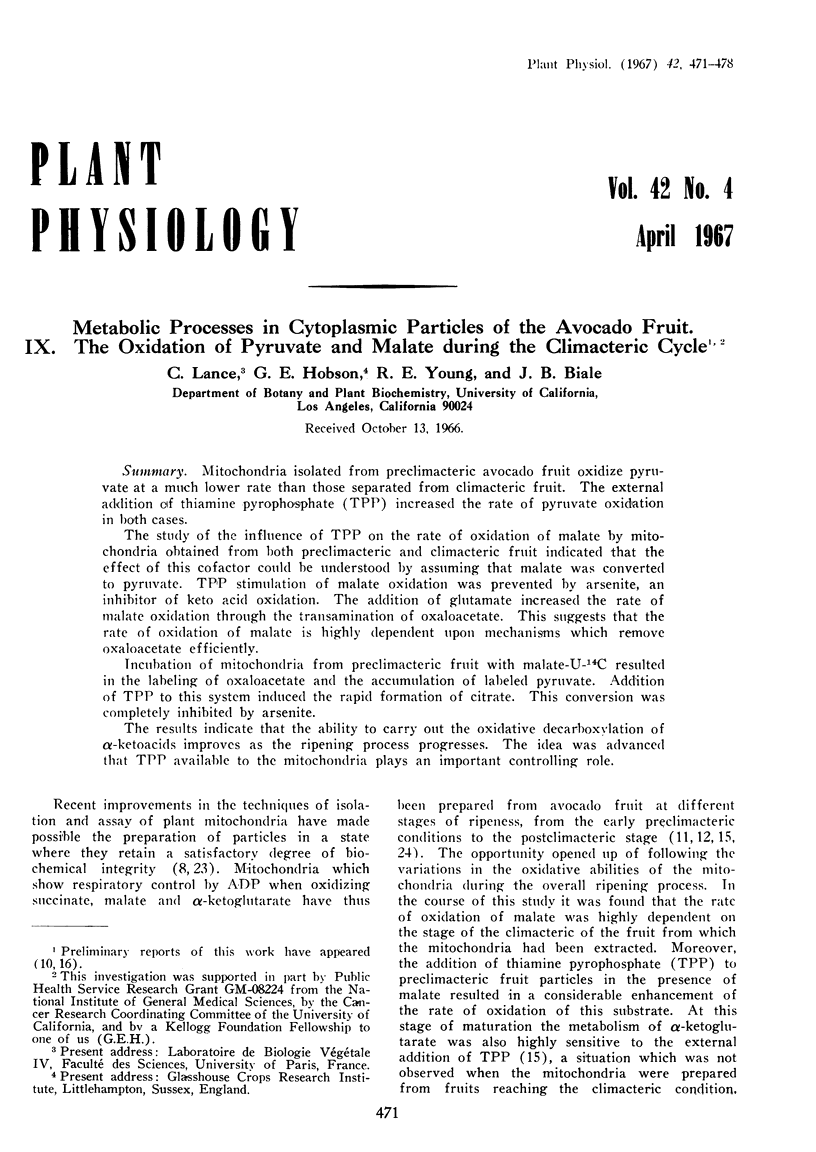
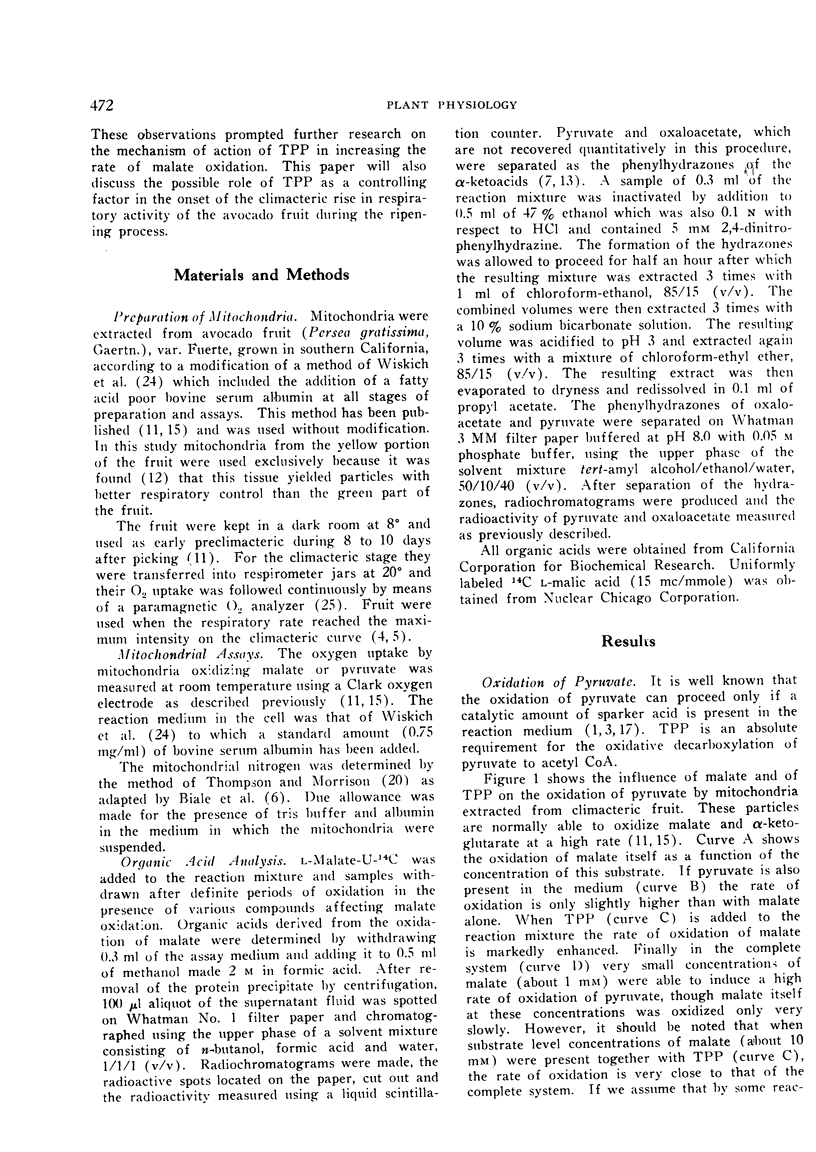
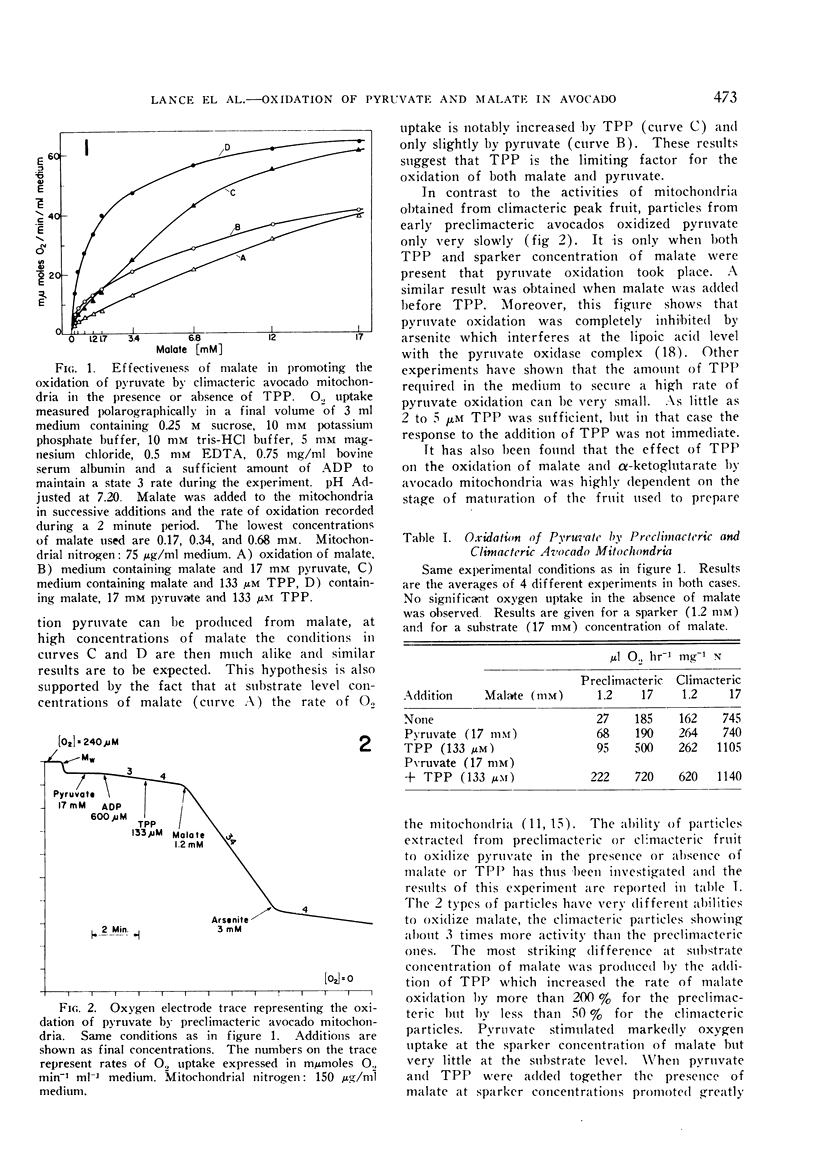
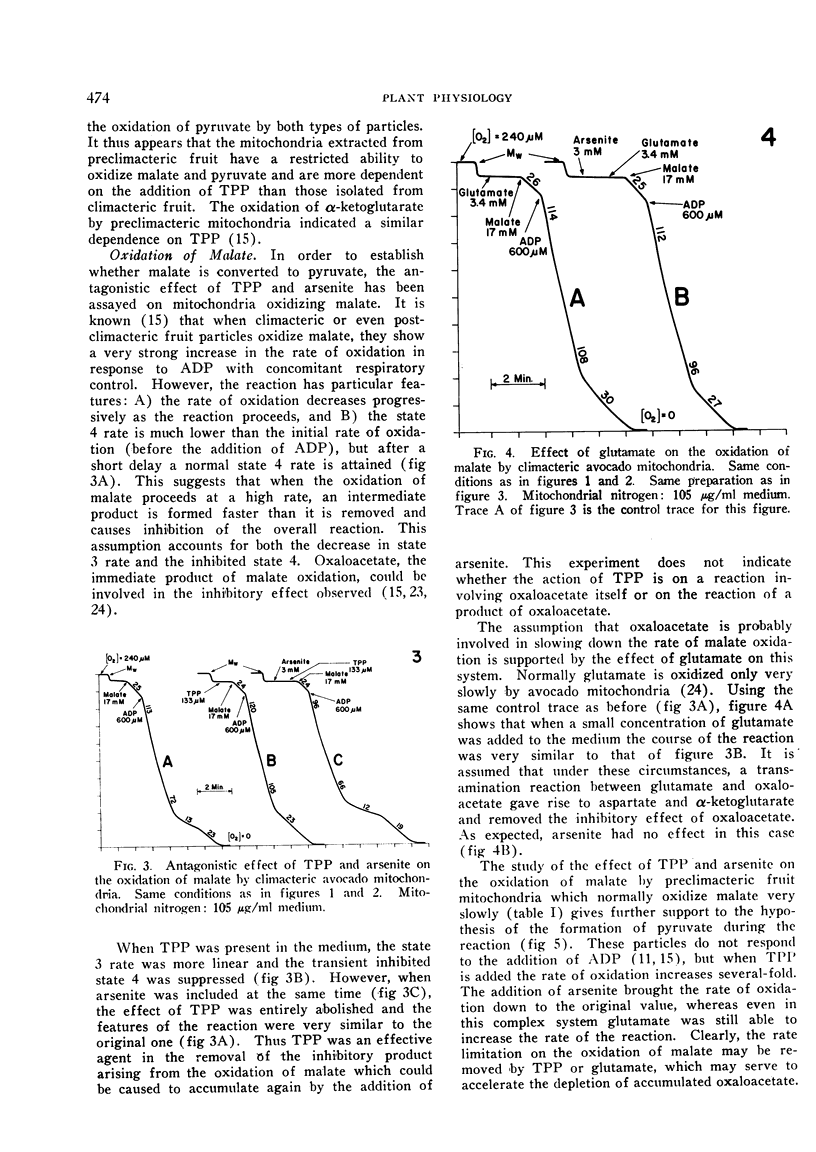

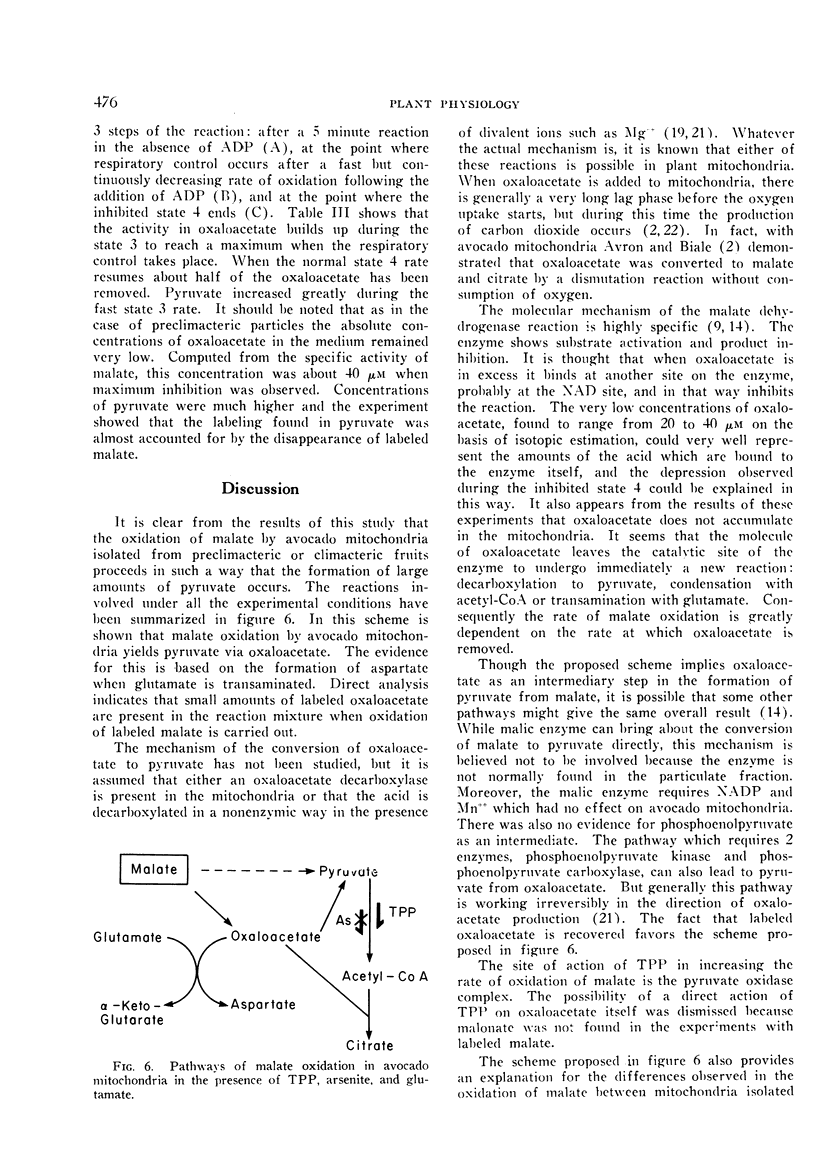
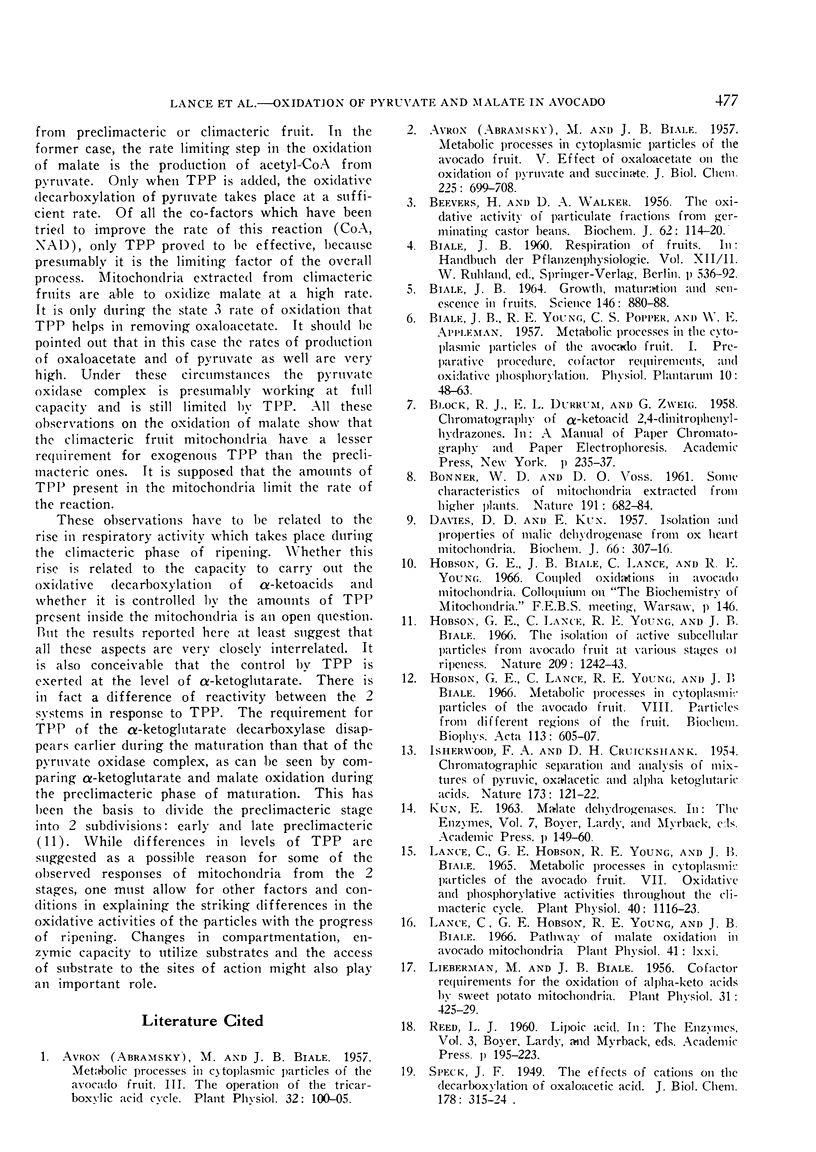

Selected References
These references are in PubMed. This may not be the complete list of references from this article.
- AVRON M., BIALE J. B. Metabolic processes in cytoplasmic particles of the avocado fruit. V. Effect of oxalacetate on the oxidation of pyruvate and succinate. J Biol Chem. 1957 Apr;225(2):699–708. [PubMed] [Google Scholar]
- Avron M., Biale J. B. Metabolic Processes in Cytoplasmic Particles of the Avocado Fruit. III. The Operation of the Tricarboxylic Acid Cycle. Plant Physiol. 1957 Mar;32(2):100–105. doi: 10.1104/pp.32.2.100. [DOI] [PMC free article] [PubMed] [Google Scholar]
- BEEVERS H., WALKER D. A. The oxidative activity of particulate fractions from germinating castor beans. Biochem J. 1956 Jan;62(1):114–120. doi: 10.1042/bj0620114. [DOI] [PMC free article] [PubMed] [Google Scholar]
- Lieberman M., Biale J. B. Cofactor Requirements for Oxidation of Alpha-Keto Acids by Sweet Potato Mitochondria. Plant Physiol. 1956 Nov;31(6):425–429. doi: 10.1104/pp.31.6.425. [DOI] [PMC free article] [PubMed] [Google Scholar]
- SPECK J. F. The effect of cations on the decarboxylation of oxalacetic acid. J Biol Chem. 1949 Mar;178(1):315–324. [PubMed] [Google Scholar]
- Wiskich J. T., Bonner W. D. Preparation and Properties of Sweet Potato Mitochondria. Plant Physiol. 1963 Sep;38(5):594–604. doi: 10.1104/pp.38.5.594. [DOI] [PMC free article] [PubMed] [Google Scholar]
- Wiskich J. T., Young R. E., Biale J. B. Metabolic Processes in Cytoplasmic Particles of the Avocado Fruit. VI. Controlled Oxidations and Coupled Phosphorylations. Plant Physiol. 1964 May;39(3):312–322. doi: 10.1104/pp.39.3.312. [DOI] [PMC free article] [PubMed] [Google Scholar]


